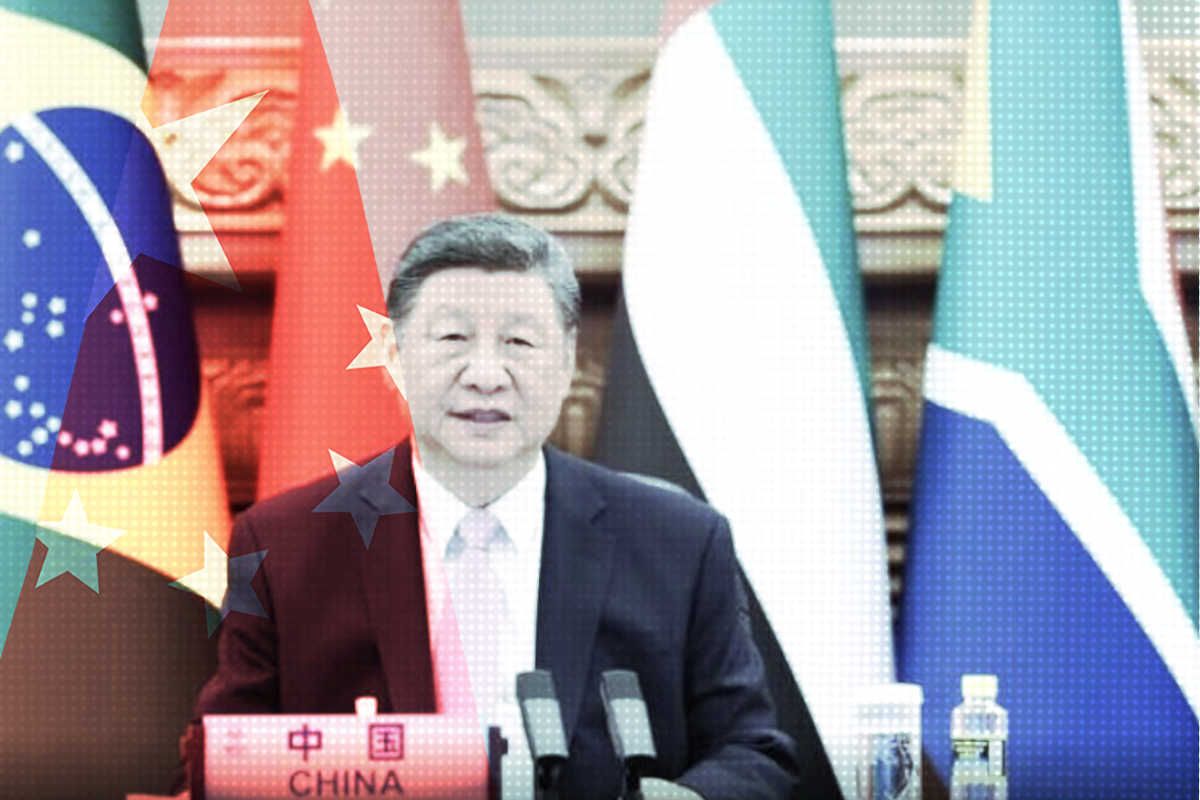Headlines and Hashtags
Beijing Youth Daily editorial appeals for balance of public and commercial interests in Chinese media
For China’s increasingly commercialized media, the New Year means freshening things up, changing the mix, dropping the bad ratings apples. While China’s political apparatus continues to apply pressure on media from above, commercial imperatives raise the threshold below. Journalism is squeezed in the middle. [PDF: pdf_beijing-youth-daily-editorial.pdf, January 1, 2007]. [IMAGE: Logo for the now defunct Today’s Topic program at Beijing TV].

On January 1, Beijing Youth Daily rued the passing of one of the latest victims of China’s ratings game, Today’s Topic (今日话题), an investigative news program produced by Beijing TV. Today’s Topic was one of 11 longstanding programs at Beijing TV to get the axe on December 18 last year.
The Beijing Youth Daily editorial argues that while private media in the West are commercially driven, there are mechanisms in place to monitor journalism as a public trust and solicit feedback from viewers through means other than simple audience ratings driven by the needs of advertisers. China, the author suggests, lacks such mechanisms, so that public-interest oriented programming faces inevitable extinction. The editorial follows in full:
“Shedding a Few Tears for Those Vanishing TV Programs”
Ma Shaohua (马少华) [Professor of journalism at Renmin University]
Beijing Youth Daily
January 1, 2007
The end of one year and the beginning of another is the time for news media to make programming adjustments. These are carried out entirely on the basis of audience polls and market research. And while this is a normal principle for the operation, survival and development of media, if it means serious, public-interest programs vanish in the process people will come to understand sooner or later that the loss is ours.
Beijing TV’s Today’s Topic is one such program. If we look at the shared fate of programs of this kind, the cancellation [of Today’s Topic] can be said to have landmark significance.
Since the launch of CCTV’s Focus [investigative news program] in 1993 [http://www.cctv.com/program/jdft/01/], a large number of similar critical television programs have appeared across the country. They investigated social problems, taking on the task of media supervision [Chinese watchdog journalism]. In the last few years before the new century they held a strong position and had broad social influence. Their ratings held steady at the top of the charts. But since the new century the ratings of these programs have suffered, and a number have been cancelled. One issue is that viewers are trending towards entertainment programming, another that the [scope of] topics available for watchdog journalism is narrowing [IE: it’s getting tougher politically for journalists to push harder-hitting topics]. The pattern of [such investigative] programs is monotone, the cost of making them high and the production time drawn out. When competing with the latest generation of live-broadcast commentary, live studio expert interviews and other low-cost, energetic and enjoyable commentary format programs, these [investigative programs] are at a distinct disadvantage. A more direct reason is that they [these investigative programs] are broadcast at peak viewing times that can draw in tens of millions of yuan in advertising revenues, but their low audience ratings are not enticing to advertising agents.
Ratings are one form of evaluative indicator. They employ statistical methods to obtain results from a sample of viewers. Indirectly, they reflect the influence and quality of programming. But the only thing they reflect directly is the collective viewing habits of an audience [IE, quantity over quality, or how invested a viewer is in a program], so they are of most value to advertising agents and have a direct bearing on the station’s advertising revenues. According to a paper by China Central Television’s Guo Yabing (虢亚冰) and Shandong TV’s Gao Limin (高立民) … evaluation systems employing primarily audience ratings are used internationally mostly for commercial TV stations. When Cui Yongyuan (崔永元) said “audience ratings are the source of innumerable evils”, he was employing an extreme expression but speaking to the important influence audience ratings have over the appraisal and survival of programs.
If these serious TV programs disappear due to low ratings, this means first of all that those households whose TV’s have been installed with audience monitoring devices are not watching them. By working their remote controls viewers are expressing their interests. The problem is that while interest is easy to express, true demand is not necessarily so easy to work out. Just as watching a program does not necessarily imply satisfaction with it, a person’s interest [in a program] does not necessarily mean he benefits from it. Speaking from the standpoint of human nature, we are all inclined to entertainment and relaxation, and we avoid those topics that are rather serious and require using greater energy. Viewed from the surface some topics seem relevant to just a small number of people, while entertainment programming can make everyone happy. People pick up their remotes and cast votes for entertainment, failing to realize the dire straits of those comparatively serious programs actually more relevant to their interests [IE, as citizens].
The idea of providing viewers with what they need and not just what they enjoy has already been endorsed by more aware media people in the West as the social responsibility of the media. OK, then what do viewers need? They need to widen their field of vision, gaining a deeper understanding of information and viewpoints that can help them understand their situation and the problems they might face [in the future].
There are also a number of interests that might not be represented in audience ratings indicators. For example, Zhang Haijun (张海军), one of our former master’s students [in Renmin University’s journalism program] and an editor at Today’s Topic, wrote in his thesis that because audience ratings calculations do not cover viewers in rural areas outside [the city], those programs addressing rural issues cannot get ratings support and therefore will necessarily suffer – notwithstanding the very enthusiastic feedback these programs get from rural viewers.
This example shows clearly that topics discussed in the news media are an important public resource and there should if possible be a more open and public process for determining [the kinds of programs available], eliminating the bias that comes with one-side indicators. Similarly, the cancellation of TV programs has long been seen as an internal business and operational question for media.
Perhaps I’m being too much of an idealist in saying this, because these questions [which involve public discussion, etc] are remote from the everyday operations [of media]. But we should also realize that even in the private [non-state] environment of Western media there are such mechanisms as press councils through which society may become involved, and there are public broadcasting systems not influenced by advertising interests. But in our own system for evaluating news media, aside from an audience ratings system under direct pressure from advertising, we still lack a mechanism for the expression of more open and diverse social interests.
Other Links:
“In Defense of Journalism as a Public Trust“, Poynter.org
[Posted by David Bandurski, January 4, 2006, 3:41pm]




















